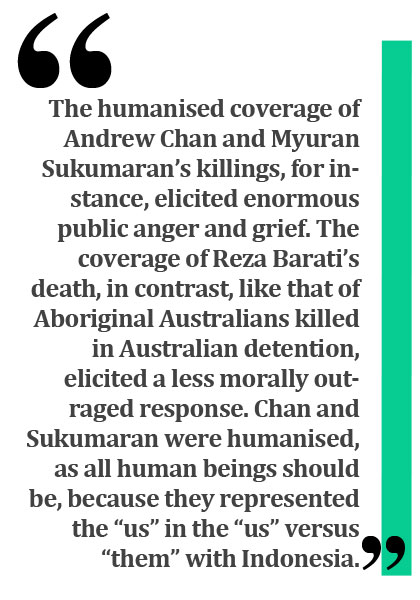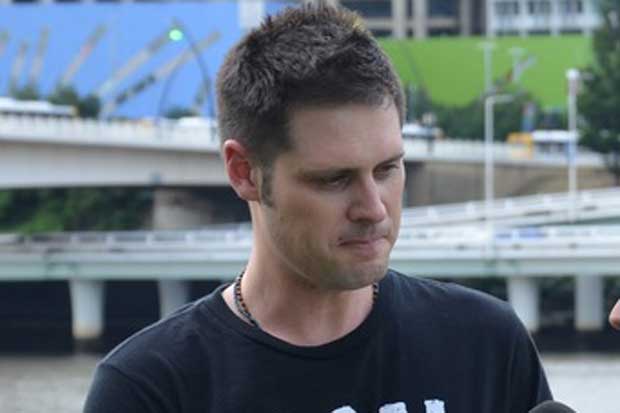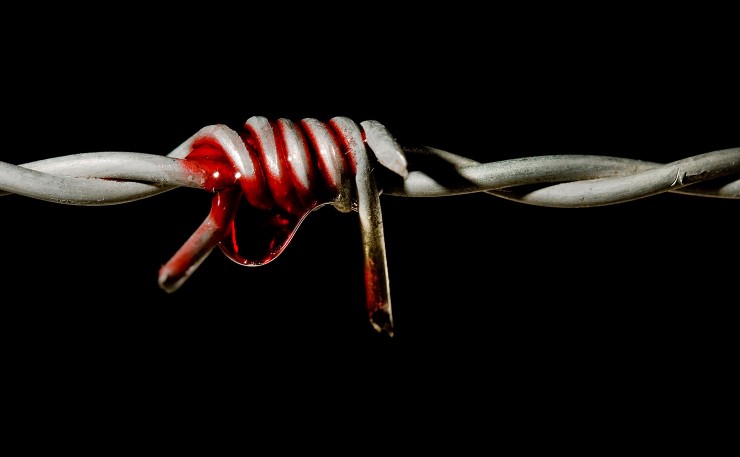Are you wondering why the deaths of Andrew Chan and Myuran Sukumaran resonated, and Reza Barati’s didn’t? Dr Lissa Johnson explains.
The Migration Amendment (Maintaining the Good Order of Immigration Detention Facilities) Bill is currently being reviewed by the Senate. The bill will broaden powers of immigration detention centre staff to use force and will reduce their accountability, placing detention centre operations outside the rule of law.Having glimpsed immigration detention through the eyes of former Nauru medical staff at a public lecture last week, this is a sobering thought. Speakers described an environment of “dark, chilling lawlessness” rife with sexual assault and abuse, where detainees are known by number rather than name, and where grown women are so frightened that they wet the bed at night.
A nurse and a doctor risked the legal ramifications of breaching their confidentiality agreement in order to speak on behalf of detainees, placing their duty of care to patients first. Among the numerous stories they recounted were those of a seven-year-old who had attempted to hang herself with electric cable ties, a woman denied sanitary pads, soiled and leaving a trail of blood and blood clots where she walked, and another, having been raped in the shower, dismissed by the detention centre psychologist for dressing ‘provocatively’.
We heard that the Government has never disputed the Australian Human Rights Commission findings that from January 2013 to March 2014 there were 233 assaults in detention involving children, 128 children who threatened self-harm and 105 children monitored for self-harm.
At an earlier public lecture in March this year, titled “The Bludgeoning of Chance”, barrister Julian Burnside AO QC also recounted personal stories of detainees.
He described the experience of an 11-year-old girl whose family had fled religious persecution in Iran. After 15 to 18 months in detention in 2002, showing clear signs of trauma, the young girl tried to hang herself with a bed sheet. Her mother, brother and little sister found her hanging, still suffocating but alive.
After relating her story, among others, Julian Burnside said, “In my naivety, I thought that if the rest of Australia knew the things that I had learned, the Government’s refugee policy would not long survive.”
Yet here we are, 13 years later. Detainee Reza Barati has been murdered in offshore detention, bludgeoned in the head according to witnesses, using a stick weaponised with nails, then kicked by a group of guards and finally killed with a rock that was smashed against his head. Witnesses to the event have allegedly been tied to chairs by Wilson guards, beaten, and threatened with rape unless they withdraw their testimony.
Even more recently a five-year-old girl showing signs of sexual abuse has tried to kill herself to avoid being sent back to Nauru. An 8 year-old has drawn a picture of a guard with an erect penis before flinging himself into his mother’s arms in distress. A group of babies and their parents are being transferred to Nauru despite the Government knowing, and having known since November 2013 that it is sending them into an environment of physical and sexual abuse.
Andrew Wilkie has referred matters to the International Criminal Court. The Australian Human Rights Commission has called for a royal commission into children in immigration detention. The independent Moss review has recommended investigation of physical and sexual abuse on Nauru. The UN Special Rapporteur on Torture has found that Australia’s immigration detention practices violate the Convention Against Torture.
And our Government’s response? A Royal Commission? Swift prosecution of Reza Barati’s murderers? Scrutiny of the Minister for Immigration’s role? Criminal investigation of child abuse and physical and sexual assault on Nauru? Steps to protect vulnerable men women and children in our care perhaps?
We drafted legislation making it easier for detention centre staff to use violence, and get away with it.
One of the most deeply troubling aspects of this state of affairs is that Julian Burnside was right in 2002 to turn to the public for help. The scientific literature on human rights abuse is punctuated with the conclusion that human rights will only prevail in societies where the public holds their leaders to account.
“Human Rights 101”, for instance, by the Science and Human Rights Commission, concludes, “Unless citizens want their governments to support human rights, government leaders rarely will do so. Eleanor Roosevelt said that the ideals of the Universal Declaration of Human Rights will ‘carry no weight unless the people know them, unless the people understand them, unless the people demand that they be lived’”.
No wonder our Government behaves as it does, then. In Australia abuse of asylum seekers is a vote-winner. “Stop the boats” stops all rational debate.
Why?
To understand the machinations of collective violence, the psychological literature has traditionally focussed on victims, perpetrators and bystanders. After World War II the now famous Milgram experiments illuminated the dark side of obedience to authority, helping to understand the actions of perpetrators in genocide and other state-sanctioned crimes. A few years later the murder of Kitty Genovese in the presence of numerous onlookers sparked research into bystander inaction and diffusion of responsibility in groups, or the “bystander effect”.
More recently, however, bystanding has come to be conceptualised in more fine-grained and nuanced terms. Bystanders can elect to be active or passive, their acts those of commission or omission, and they are not necessarily immobilised by a crowd. In other words, the line between passivity and volition, or bystanding and participation, is far from clear.
The analysis of atrocity has also expanded to include a focus on instigators, an obvious but previously overlooked role. Needless to say, instigators are often governments, as well as leaders in other forms.
In a paper on the topic, psychologist David Mandel says, “The function of instigators is not to carry out the harm, but to tune and transmit the messages that will effectively motivate others to cause harm.”
Those with the greatest power to achieve this, he goes on to explain, are those in control of…
Not government.
Not wealth.
But information.
Information… In other words, the media.

Reporting Government claims of having saved lives by stopping boats, while omitting to also report that more lives were lost at sea in 2014 than in any previous year, for instance, is an omission with instigating force. It enables the lie that tunes and transmits the message to do harm – stop the boats.
One of the most powerful and pervasive ways to elicit acquiescent participation is to harness group-based collective angst.
Collective angst is a diffuse sense that at some indeterminate time in the future one’s social or cultural group (ingroup) will come under attack.
In research on the issue, just a single news article mentioning 9/11 (victimisation reminder) or warning of unspecified future Islamic fundamentalist attack (ingroup threat) causes sufficient collective angst to arouse forgiveness of US atrocities in Iraq. This effect holds regardless of anti-Muslim prejudice: that is, whether a person is prejudiced against Muslims or not.
The literature on intergroup relations abounds with findings such as these. Across various measures and methods, threat, angst, and death reminders of all kinds fosters support for violence against members of other social and cultural groups.
Tony Abbott’s 346 references to a “death cult” since election, then, although repetitive and unimaginative, are probably smart. The latest rumours of ISIS’ nuclear ambitions will undoubtedly help.
Omitting to place this angst-inducing material in context, however, discharges the instigating act.
When reporting the death cult refrain, neglecting to also report that compared to terrorism we are more likely to die from texting or falling out of bed distorts the true nature of the angst-inducing threat.
Neglecting to mention that citizens of the financialised world are 2,245 times more likely to die as a result of a GFC goes even further, concealing a truly home grown threat.
That Americans are more likely to be killed by toddlers than terrorists probably just indicates how gullible our leaders think we are.
This kind of angst-inducement primes potential bystanders not only for a war on terror, but also for prejudice-based violence of all kinds. It foments what peace psychologists call an ‘atrocity-generating situation’, in which violence against outgroup members relieves ingroup annihilation anxiety, the mother of all group-based angst.
When outgroup members are wrongly depicted as criminal, with the brand “illegal”, the violence is even easier to unleash.
Participants in collective violence, however, rarely see themselves as such. In order to inflict torture and abuse on other human beings, self-deception is an important tool.
Professor of Philosophy, Adam Morton says that to view atrocity in terms of “the evil doer as a diabolical force utterly different from the rest of us… is itself to enter into a kind of self-deception. It is to blind ourselves to the amount of horror in the world that results from the actions of normal, well intentioned, kindly people, struggling to evaluate the actions they are agents or accomplices in.”
Of course normal, well-intentioned, kindly agents or accomplices in horror must construct psychological barriers between themselves and the horror that they inflict.
A common method of achieving this is to place the horror in question outside the boundaries of one’s usual morality, a process known as moral disengagement. Where atrocity is concerned, dehumanisation is a particularly powerful means to morally disengage.
Dehumanisation is the (often unconscious) denial of distinctively human qualities to others. If others are less human, they are less deserving of human rights.
Like group-based angst, dehumanisation tends to be directed towards members of other social and cultural groups, and is related to support for intergroup violence and aggression of all kinds.
In one study, for instance, Christians who read articles about Mulsim culture expressed greater willingness to torture Muslim prisoners, using the methods of Abu Ghraib, when Muslim people were depicted as subtly less human. This was achieved by attributing them with fewer uniquely human qualities such as ‘passion’ or ‘ambition’.
For anyone who doubts the power of information it is here. The omission of a few subtle but well-chosen words is enough to manipulate a normal, kindly, well-intentioned person’s willingness to torture. Provided that the victim is Muslim at least.

In Australia, our attitude towards detained people’s fate follows a similarly malleable path. The humanised coverage of Andrew Chan and Myuran Sukumaran’s killings, for instance, elicited enormous public anger and grief. The coverage of Reza Barati’s death, in contrast, like that of Aboriginal Australians killed in Australian detention, elicited a less morally outraged response.
Chan and Sukumaran were humanised, as all human beings should be, because they represented the “us” in the “us” versus “them” with Indonesia.
Another morally disengaging omission in the Australian mainstream media is the lack of a thoroughgoing, factual examination of contextual issues surrounding the immigration ‘debate’.
What puts asylum seekers on boats in the first place, for example? What happens to those boats, and the people on them, when they are turned back? What can we factually say about the likely costs and benefits of increased immigration? What are the alternatives to immigration detention?
If we are to torture people, shouldn’t we at least cross-examine our rationale?
The fact that our mainstream media declines to do so in any scrupulous way amounts to an absence of moral reasoning. This is another precursor to atrocity, and another morally disengaging means of priming a population to do harm.
Our right to morally disengage gives our collective self-deception a particularly potent and self-aggrandising force. Such righteousness stems from what psychologists call ingroup glorification, also known as collective narcissism, manifesting as nationalism in extreme forms.
Ingroup glorification is the belief that one’s social or cultural group is superior to other groups, particularly in the moral domain.
In one study, for example, US participants were asked to read newspaper articles describing allied personnel torturing Iraqi civillians to death, using water torture, beatings, stress positions and humiliating acts. Readers higher on ingroup glorification were more tolerant of these abuses and less supportive of sanctions for perpetrators. They were also more inclined to dehumanise the Iraqi victims by viewing them as less civilised, more backward, less morally developed, and their families as suffering less emotional pain at their relatives’ deaths.
A related psychological process is system justification, which involves a wish to view one’s social systems as legitimate and good. Innocent victims threaten the system-justifying world view, and can elicit moral disengagement in order to keep system-justifying beliefs intact.
The mainstream media routinely fosters system-justifying ingroup glorification through entrenched double standards around issues with an ethical or moral vein, for instance state violence, legitimacy, overthrows and coups, support for or opposition to elected governments and democracies, unprovoked attack, arming versus fighting extremist groups such as ISIS, war crimes, beheadings, and atrocities of other sorts.
The recent sacking of Scott McIntyre provided a lesson in how swiftly the system-justifying self-glorifying narrative will be protected in Australia, especially when the Minister for Communications takes offence.
In 2011 Hilary Clinton declared a war on information. It seems that Australia has joined that war.
The refusal of major media outlets to publish New Matilda’s leaked Moss transcripts in March offers another illustration of a system-justifying press. Concealing the dubious internal workings of a government department accused of torture reflects an unwillingness to dismantle the façade of legitimacy around our collectively violent acts.
In other words, shining a light in dark places not only holds governments to account, but it pierces the self-deceiving narrative that enables torture and other atrocities to thrive.
Governments know this. Analyses of governments’ human rights practices show that as human rights abuses increase, so does censorship. Perhaps that is why Barack Obama has prosecuted more whistleblowers than all previous US presidents combined and why New Matilda finds itself repeatedly in court.

Thankfully, not all consumers of information are equally susceptible to the popular media’s atrocity-instigating force. Higher levels of personal qualities such as authoritarianism (punitive obedience to traditional authorities and the status quo), social dominance orientation (dog-eat-dog pursuit of social inequality), and right wing political ideology are all negatively related to support for human rights.
People higher in social dominance orientation are also especially likely to dehumanise refugees.
Given the psychological correlates of progressive ideology, most New Matilda readers, in contrast, are likely to be low on all of these traits. And low on system justification, dehumanistion, ingroup glorification and vulnerability to exaggerated threats.
Such atrocity-resistance appears to involve a recently identified psychological characteristic, a newcomer on the intergroup scene, which works against destructive intergroup processes. It is called ‘identification with all humanity’ or ‘psychological sense of global community’, and is positively related to support for human rights.
People high on this quality value ingroup and outgroup members equally, viewing themselves as part of a larger human group.
In the same way that destructive intergroup processes can be harnessed for violence, a sense of global community can be harnessed for good. In one study, simply asking Americans and Palestinian citizens of Israel to think about the shared human consequences of climate change led to reduced support for violence and increased support for peace.
Identification with all humanity also appears to be a prime mover in getting bystanders to act. Until recently there was little understanding of the bystander attitude-behaviour gap. We didn’t know why some people remain platitudinous and passive in the face of atrocity while others take active, preventative steps.
Identification with all humanity appears to bridge this gap by turning values into action. It predicts whether people with pro-human rights ideals will enact those ideals, for instance by donating money, signing petitions, marching or writing to their government officials on a range of human rights concerns.
Peace psychologist Eric Straub, who designed a widely implemented program of reconciliation in Rwanda, stresses the importance of precisely such bystander action in preventing the progressive escalation of collective violence.
He says, “bystanders are also complicit” and warns, “The passivity of witnesses, internal bystanders who are part of the population… affirms perpetrators and allows the unfolding of the evolution of violence”. He describes this evolution as “steps along a continuum of destruction”, adding that “part of the task of prevention is to generate earlier action by bystanders”.
The evolution of violence is often slow and insidious. It does, however, leave tell-tale signs.
A government accused of torture passing a bill that increases its powers to use force outside the rule of law is one. Another is the heightened secrecy provisions in a bill passed quickly and quietly last week. The bill grants new powers of surveillance to the Department of Immigration and Border Protection while removing protections and increasing penalties for whistleblowers.
Given the critical role of media in atrocity-instigation, of all the actions a bystander could take, funding independent media is probably the most powerful level at which to intervene.
Enabling an atrocity-mitigating narrative, to counter the atrocity-instigating one, has the greatest chance of defusing atrocity-generating conditions and mobilising bystanders to act.
Without it, human rights organisations are swimming against a very powerful psychological tide.
It might feel too easy – or too hard – to bother. But it may be those children’s only hope.
Donate To New Matilda
New Matilda is a small, independent media outlet. We survive through reader contributions, and never losing a lawsuit. If you got something from this article, giving something back helps us to continue speaking truth to power. Every little bit counts.




